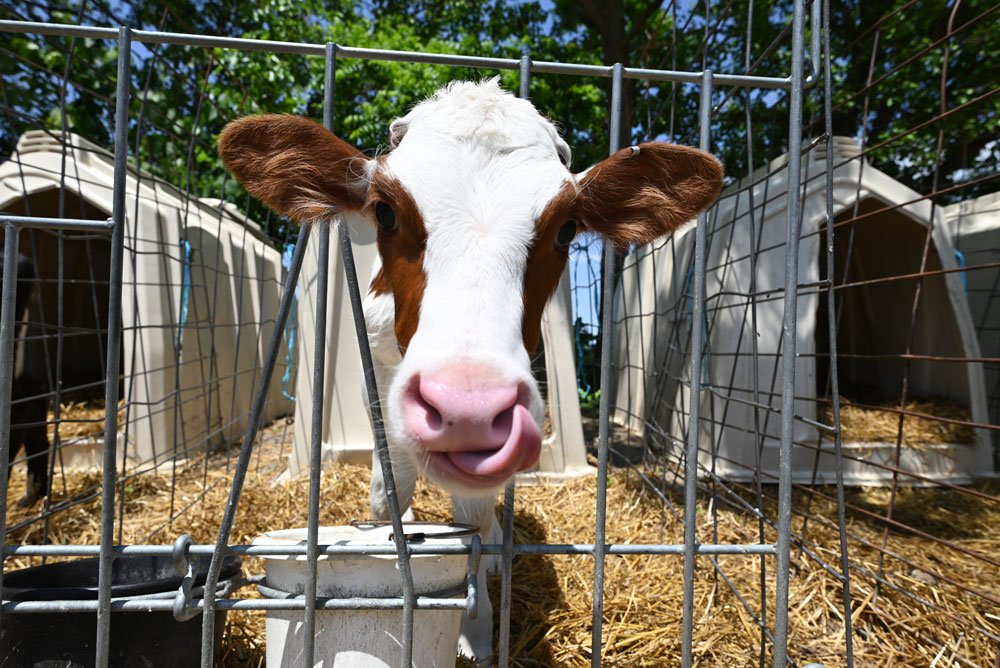
Mixing Calf Milk Replacer
If you’re a calf raiser, you probably mix hundreds, if not thousands, of batches of milk replacer every year. It’s a task that becomes second nature in your daily routine.
But not every calf milk replacer product is the same, and mixing and feeding instructions may vary. Especially if you are using a new product, it’s important to check the back of the tag to make sure you’re following that specific product’s guidelines correctly. Here are our key steps to feeding accurately and preventing mixing errors:
Step 1 - Weigh milk replacer
For the best accuracy weigh the milk replacer powder on a scale.
Para obtener la mejor precisión pes el sustituto de leche en polvo en la balanza.
Step 2 - Add water
Add 1/2 of water volume to pail to attain 120-125ºF mixing temperature.
Agregue 1/2 del volumen de agua al balde a 120-125°F.
Step 3 - Add powder
Sprinkle milk replacer powder onto water while mixing with a whisk. Mix with whisk for 20 seconds after last powder is added.
Espolvorear sustituto de leche en polvo en agua mientras se mezcla con un batidor. Mezcle con un batidor durante 20 segundos después de agregar el último polvo.
Step 4 - Wait
Leave set for 30-60 seconds to fully hydrate powders.
Déjelo reposar durante 30-60 segundos para hidratar completamente los polvos.
Step 5 - Continue mixing
Continue mixing with a whisk until all powder is thoroughly dissolved with no clumps.
Continúe mezclando con un batidor hasta que todo el polvo este completamente disuelto sin grumos.
Step 6 - Add warm water
Add warm water to full volume while mixing gently and feed at 101-105ºF.
Agregue agua tibia a su volumen total mientras mezcla suave y alimente a 101-105ºF.
Learn more about our milk replacers for calves or contact a sales representative in your area.
Download our mixing instructions poster
to share with your team
Download the 11 x 17 poster
Download the 8.5 x 11 poster





Waste milk – a “free” source of acceptable calf nutrition. Or is it?Technically, waste milk is not “free,” because there still is a cost to produce it. It is only perceived as free because there is nothing else a dairy can do with it.